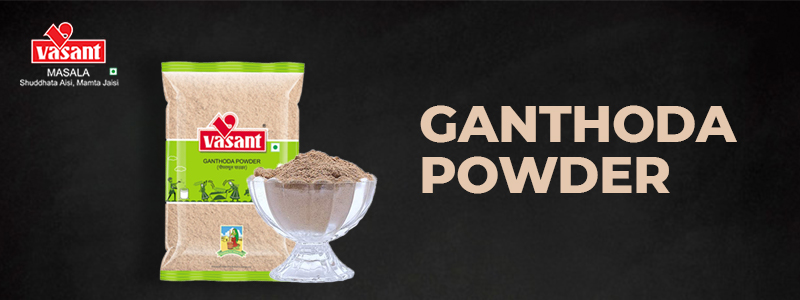
Ganthoda, also known as long pepper root, Peepramul, or pippali, is a well-known Ayurvedic spice. It may be used in four ways: as a spice, an ayurvedic medicine, a therapeutic herb, and as a catalyst to enhance the impact of other plants. In addition, it has anti-ageing properties. Piperine is found in long peppers. Insufficient blood circulation is stimulated by piperine. When combined with other active components in medication or product, it improves absorption of the other active compounds in the drug or product.
What is Ganthoda Powder?
In addition to Peepramul, it is also known as Ganthoda, which is different from sonth (dried ginger). As a powder, it is often mixed with ginger powder, jaggery and water to relieve stomach and joint pain. As the name implies, Peepramul powder is made from a rhizoid root, which is closely related to ginger root. Because of the presence of volatile oils, Peepramul root has a distinct smell and taste. These volatile oils are a mixture of zingerone, shogaols, and gingerols.
Ganthoda Powder Benefits
- In traditional medicine, Peepramul powder is used to make tea for colds.
- Headaches can be relieved by using Ganthoda powder.
- Ganthoda powder is rich in minerals, particularly magnesium. It is well-known for its ability to relieve pain in the joints.
- Stomach and joint discomfort can be treated with Ganthoda powder mixed with ginger, water, and jaggery.
- It is thought to be a lung rejuvenator. In the lungs, it improves circulation by relaxing blood vessels.
- Assimilation of nutrients may be improved as a result of its ability to promote digestion. It is also considered a natural remedy for gastric problems.
- Hepatoprotective characteristics are believed to exist in Ganthoda powder.
- Supports a healthy respiratory and digestive system.
- Has anti-inflammatory and expectorant effects, according to Ayurveda.
- Weight control may be aided by the use of this product.
- Ganthoda may also be helpful in the treatment of dental pain. When applied to the gums and teeth, Ganthoda powder mixed with honey relieves tooth sensitivity by regulating Kapha.
Ganthoda Powder Uses
- Peepramul rhizomes have a mild flavour but are luscious and meaty. To have them as an appetiser, they're usually dipped in vinegar (or sherry) or sautéed.
- To create herbal tea, Peepramul powder can be steeped in boiling water with honey or sliced orange or lemon fruit.
- Several Indian and Chinese recipes call for Peepramul powder to flavour meals such as shellfish or mutton, and several vegetarian recipes.
Ganthoda Powder Side-Effects
- People with pitta imbalance will have a hard time tolerating this spicy root because of its heat.
- It can induce or aggravate gastritis, as well as stomach, throat, palm, and foot burning sensations.
- This herb should not be used for a lengthy period of time. - Pregnant or nursing women should see a medical professional before using this spice.
To buy this inexplicable spice, visit the Vasant Masala e-store. Our Peepramul powder or Ganthoda powder is lump-free & free from dust, stones, and other impurities.

